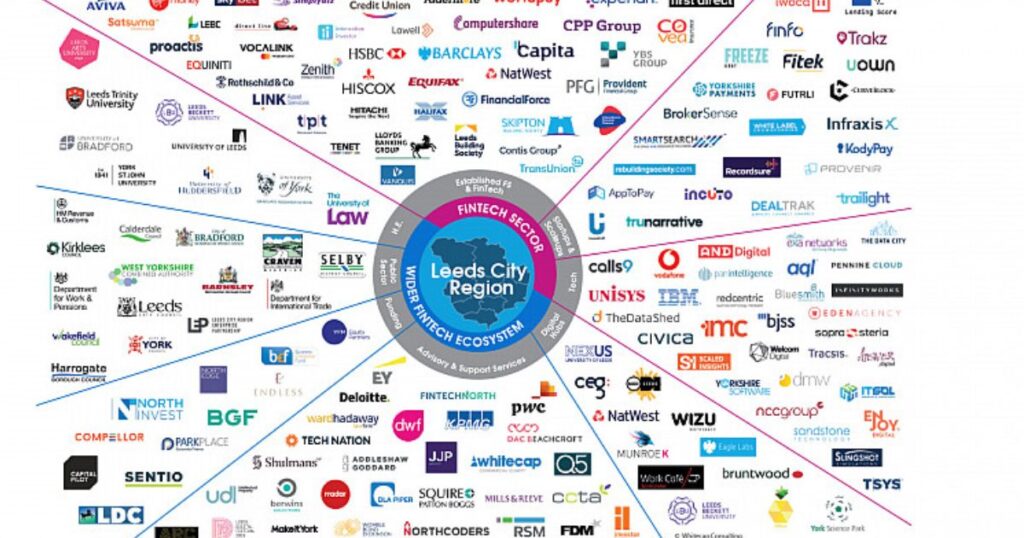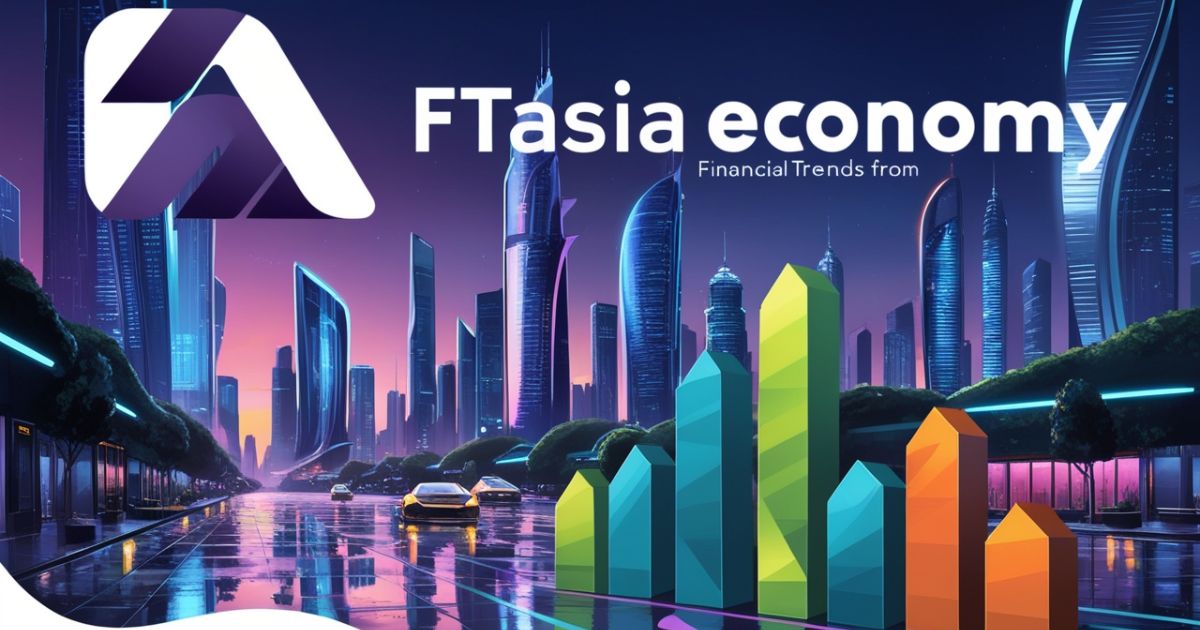Asia’s financial ecosystem is undergoing a profound transformation, with fintech emerging as a game-changer across economies.
From digital payments to blockchain innovations, Asia leads global trends in financial technology.
This article explores the FTAsiaEconomy financial trends from FintechAsia, providing insights into how fintech is reshaping economies, enabling financial inclusion, and creating new opportunities.
Introduction: Fintech’s Revolutionary Role in Asia
The global financial landscape is experiencing a profound transformation, with FintechAsia emerging as the epicenter of technological innovation.
FTAsiaEconomy financial trends reveal a dynamic ecosystem where technology intersects with financial services, creating unprecedented opportunities for economic growth and financial inclusion.
Asia stands at the forefront of this digital revolution, leveraging cutting-edge technologies to reimagine how financial services are delivered, consumed, and experienced.
The convergence of rising internet penetration, widespread mobile adoption, and supportive government policies has positioned Asia as a global leader in financial technology.
Unlike traditional financial models, the region’s approach to fintech is characterized by its innovative spirit, user-centric design, and commitment to bridging economic disparities.
From the bustling metropolises of China and Singapore to the emerging markets of Indonesia and India, the continent is rewriting the rules of financial engagement.
1. Digital Payments: The Catalyst of Change

Digital payments have emerged as the cornerstone of Asia’s financial transformation. Platforms like Alipay in China, Paytm in India, and GCash in the Philippines have revolutionized transaction mechanisms, transforming cash-based economies into digital financial ecosystems.
These platforms offer more than just payment solutions; they represent comprehensive financial services that integrate seamlessly into users’ daily lives.
The proliferation of QR code-based payments has been particularly instrumental in democratizing financial access. Singapore and Malaysia have been at the forefront of encouraging digital transactions, creating regulatory frameworks that support cashless societies.
Small businesses and rural consumers now have unprecedented access to financial tools that were previously unavailable, dramatically expanding economic participation.
2. Blockchain Technology: Beyond Cryptocurrency
Blockchain technology has transcended its initial association with cryptocurrencies, emerging as a transformative force in financial services.
Japan and South Korea are leading global efforts to explore blockchain for government-backed digital currencies, recognizing its potential to address systemic inefficiencies in traditional financial systems.
The technology’s core attributes—transparency, security, and decentralization—make it an invaluable tool for various financial applications.
From supply chain finance to cross-border payments and digital identity verification, blockchain reduces transaction times from days to minutes while significantly lowering operational costs. This represents a fundamental reimagining of financial infrastructure.
3. Neobanks: Transforming Banking Experiences
Neobanks have emerged as disruptive forces in the traditional banking landscape. Digital-only financial institutions like KakaoBank in South Korea and TONIK in Southeast Asia are redefining banking experiences by offering fully online financial services.
These platforms cater specifically to tech-savvy millennials and unbanked populations, providing comprehensive financial solutions without the overhead of physical branches.
By leveraging advanced technologies and user-centric design, neobanks offer savings accounts, loans, and investment services through intuitive digital platforms. They represent a critical mechanism for expanding financial inclusion, particularly in regions with limited traditional banking infrastructure.
4. Artificial Intelligence (AI): Personalized Financial Solutions

Artificial Intelligence is revolutionizing financial services through unprecedented levels of personalization and efficiency.
AI-powered chatbots provide real-time customer assistance, while sophisticated algorithms deliver personalized investment advice tailored to individual financial profiles.
Advanced machine learning models enable sophisticated fraud detection systems, mitigating risks and enhancing security.
By analyzing vast datasets, these systems can identify potential fraudulent activities with remarkable accuracy, providing an additional layer of protection for financial transactions.
5. Fintech in E-commerce: Enabling Seamless Transactions
The integration of financial technology into e-commerce platforms has created seamless transactional experiences.
Platforms like Lazada and Shopee have leveraged digital wallets and innovative credit facilities to transform online shopping dynamics. “Buy now, pay later” options and integrated payment solutions have empowered small businesses and enhanced consumer convenience.
Read This Post: Understanding Harmonicode: The Future of Coding and Technologye
6. Country-Specific Fintech Innovations
China: A Global Fintech Leader
Ant Group has pioneered a comprehensive financial ecosystem that integrates social media, payments, and financial services. WeChat Pay exemplifies the unique approach of blending social connectivity with financial transactions.
India: Driving Financial Inclusion
The Unified Payments Interface (UPI) has democratized digital payments, connecting urban and rural populations. Startups like Razorpay and PhonePe continue to drive innovative financial solutions.
Singapore: A Hub for Fintech Startups
With progressive regulations and an innovation-friendly environment, Singapore attracts global fintech players seeking to pilot groundbreaking solutions.
Indonesia: Empowering the Unbanked
Indonesia’s fintech growth focuses on mobile banking and microloans, addressing the needs of its large unbanked population.
7. The Economic Impact of Fintech in Asia
Fintech platforms are driving significant economic transformation by enabling financial inclusion, providing alternative financing for small businesses, attracting foreign investments, and accelerating GDP growth.
They represent more than technological innovations—they are catalysts for broader economic development.
a. Financial Inclusion for All
Fintech platforms enable underserved populations to access essential financial services, from loans to insurance.
The FTAsiaEconomy financial trends from FintechAsia reflect this transformative impact, reducing the wealth gap across the region.
b. Empowering Small and Medium Enterprises (SMEs)
SMEs benefit from alternative financing solutions like peer-to-peer lending, helping them expand their operations.
c. Attracting Foreign Investments
Asia’s thriving fintech sector has drawn significant foreign investments, further fueling growth and innovation.
d. Accelerating GDP Growth
Fintech contributes to GDP growth by increasing productivity, fostering innovation, and creating job opportunities.
8. Challenges Facing Asia’s Fintech Ecosystem

Despite remarkable progress, the fintech landscape faces challenges including regulatory complexity, cybersecurity concerns, digital divides, and building consumer trust. Navigating these challenges will be crucial for sustained growth and widespread adoption.
a. Regulatory Complexity
Diverse regulations across countries hinder cross-border fintech operations.
b. Cybersecurity Concerns
With increased digitization comes the risk of cyberattacks, emphasizing the need for robust security measures.
c. Bridging Digital Divides
Despite progress, rural and underserved areas face barriers to accessing fintech services.
d. Trust and Awareness
Building consumer trust in new financial technologies remains a challenge, especially among older generations.
9. The Role of FintechAsia in Shaping Financial Trends
FintechAsia serves as a critical platform for collaboration, research, and innovation. By connecting industry leaders, startups, and policymakers, it drives forward the evolution of financial technologies across the continent.
10. Future Prospects: The Next Wave of Fintech Innovations
Future developments will likely focus on sustainable finance initiatives aligned with ESG principles, enhanced cross-border payment systems, integration of emerging technologies, and expansion into rural markets.
a. Sustainable Finance Initiatives
Fintech companies are increasingly aligning with ESG principles, promoting sustainable investments and ethical practices.
b. Enhanced Cross-Border Payments
Blockchain technology is set to revolutionize international money transfers, making them faster and more cost-effective.
c. Integration of Emerging Technologies
AI, machine learning, and big data will continue to drive innovation, enabling more personalized and efficient financial services.
d. Expansion into Rural Markets
The next phase of fintech growth will focus on bridging the digital divide, bringing financial services to underserved regions.
Read This Post: Wdroyo Insurance TCNEVS: A Comprehensive Guide to Modern Insurance Solutions
Conclusion: Asia’s Fintech Renaissance
The FTAsiaEconomy financial trends from FintechAsia represent a comprehensive reimagining of financial services.
By leveraging technology and innovative business models, Asia is not just transforming its own economic landscape but setting global benchmarks for financial innovation.
FAQ’s
What are FTAsiaEconomy financial trends from FintechAsia?
These trends represent cutting-edge financial technology innovations across Asia, encompassing digital payments, blockchain, AI-powered financial solutions, and transformative approaches to banking and economic services.
How does fintech benefit small businesses in Asia?
Fintech provides small businesses with alternative financing options like peer-to-peer lending, digital payment platforms, and accessible credit facilities that traditional banking systems often overlook.
What challenges does fintech face in Asia?
Key challenges include navigating complex regulatory environments, addressing cybersecurity concerns, bridging the digital divide, and building consumer trust in emerging financial technologies.
How is FintechAsia contributing to the fintech ecosystem?
FintechAsia serves as a crucial collaborative platform connecting industry leaders, startups, and policymakers to drive innovation, research, and knowledge sharing in financial technology.
What’s the future of fintech in Asia?
The future includes sustainable finance initiatives, enhanced cross-border payments, integration of AI and blockchain technologies, and expanded financial services into rural and underserved markets.
Which countries are leading fintech innovation in Asia?
China, India, Singapore, and Indonesia are at the forefront, each offering unique approaches to digital financial services and technological innovation.
How is AI transforming financial services in Asia?
Artificial Intelligence is enabling personalized financial solutions, advanced fraud detection, real-time customer support, and sophisticated investment recommendation systems.
What role do neobanks play in Asia’s financial landscape?
Neobanks provide fully digital banking experiences, targeting tech-savvy generations and unbanked populations with comprehensive, user-friendly financial services.
How are blockchain technologies being implemented in Asian finance?
Blockchain is being used for secure cross-border payments, supply chain finance, digital identity verification, and exploring government-backed digital currency initiatives.
What makes Asia’s fintech ecosystem unique?
Asia’s fintech ecosystem is characterized by rapid technological adoption, government support, focus on financial inclusion, and innovative approaches to solving complex financial challenges.

Beau Alexander is an experienced administrator known for his exceptional organizational skills and keen attention to detail. With a strong background in team leadership and project management, Beau excels at streamlining operations and enhancing productivity. His proactive approach ensures efficient problem-solving and seamless coordination across departments. Beau’s personable nature and excellent communication skills make him adept at building strong relationships with both colleagues and stakeholders. Dedicated to fostering a positive work environment, he consistently drives initiatives that promote growth and innovation.








